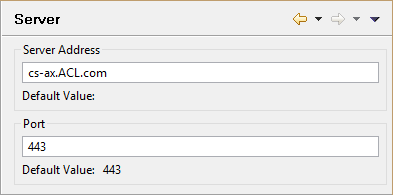Use the server host name rather than the IP address:

Note
The Options dialog box is only displayed if you did not enter the server address for AX Server during AX Client installation. In the dialog box, leave the Port number at the default value of 443 unless otherwise instructed.
| User account | Credential format |
|---|---|
| Default domain account | username |
| Non-default domain account | domain\username |
| Local Windows account where AX Server is installed | computerName\username |
If you cannot connect to AX Server, or if there are error messages, ensure that you have entered the correct server address and port. If problems continue, contact your Analytics Exchange administrator.